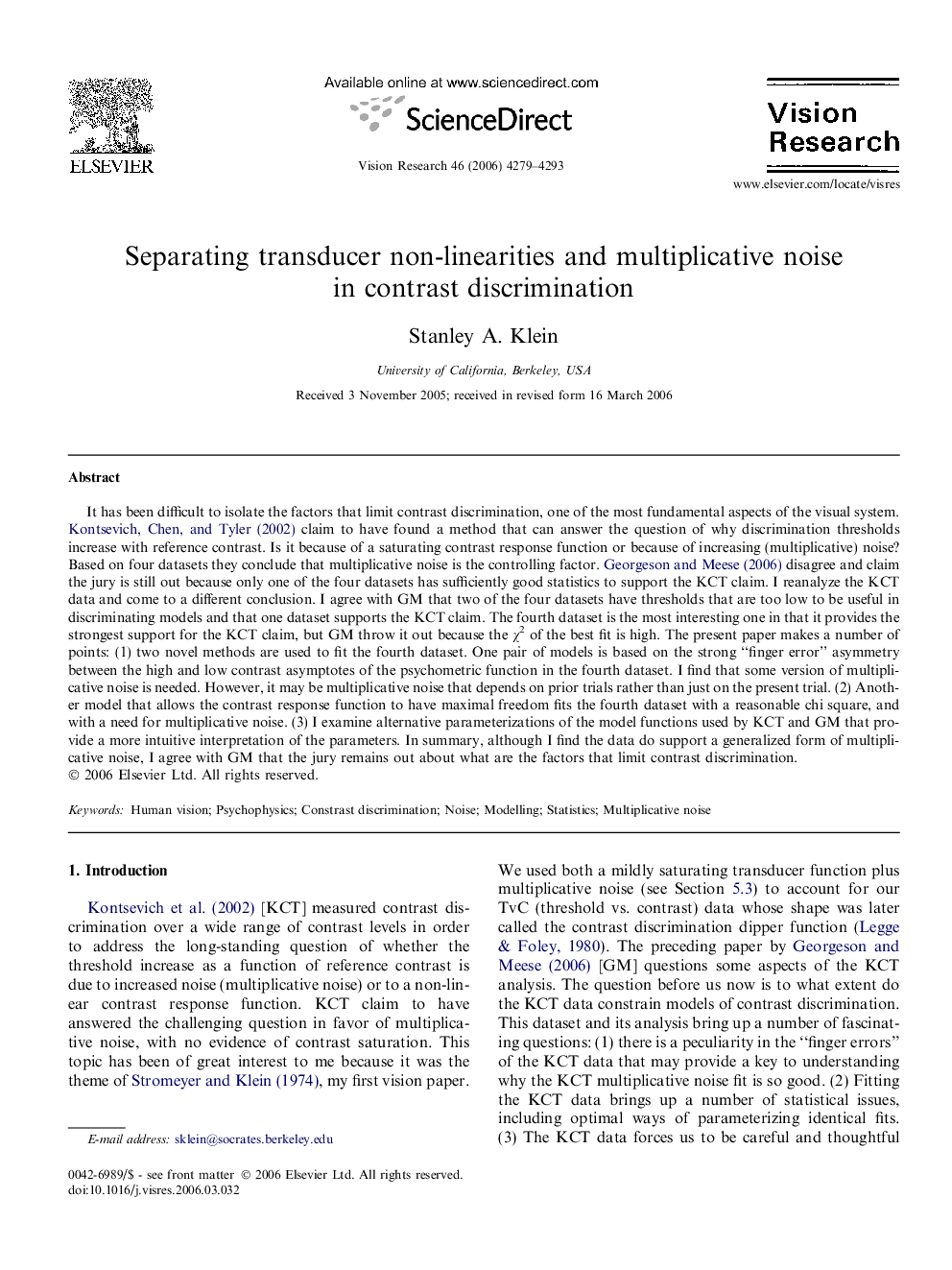| Article ID | Journal | Published Year | Pages | File Type |
|---|---|---|---|---|
| 4036166 | Vision Research | 2006 | 15 Pages |
It has been difficult to isolate the factors that limit contrast discrimination, one of the most fundamental aspects of the visual system. Kontsevich, Chen, and Tyler (2002) claim to have found a method that can answer the question of why discrimination thresholds increase with reference contrast. Is it because of a saturating contrast response function or because of increasing (multiplicative) noise? Based on four datasets they conclude that multiplicative noise is the controlling factor. Georgeson and Meese (2006) disagree and claim the jury is still out because only one of the four datasets has sufficiently good statistics to support the KCT claim. I reanalyze the KCT data and come to a different conclusion. I agree with GM that two of the four datasets have thresholds that are too low to be useful in discriminating models and that one dataset supports the KCT claim. The fourth dataset is the most interesting one in that it provides the strongest support for the KCT claim, but GM throw it out because the χ2 of the best fit is high. The present paper makes a number of points: (1) two novel methods are used to fit the fourth dataset. One pair of models is based on the strong “finger error” asymmetry between the high and low contrast asymptotes of the psychometric function in the fourth dataset. I find that some version of multiplicative noise is needed. However, it may be multiplicative noise that depends on prior trials rather than just on the present trial. (2) Another model that allows the contrast response function to have maximal freedom fits the fourth dataset with a reasonable chi square, and with a need for multiplicative noise. (3) I examine alternative parameterizations of the model functions used by KCT and GM that provide a more intuitive interpretation of the parameters. In summary, although I find the data do support a generalized form of multiplicative noise, I agree with GM that the jury remains out about what are the factors that limit contrast discrimination.
